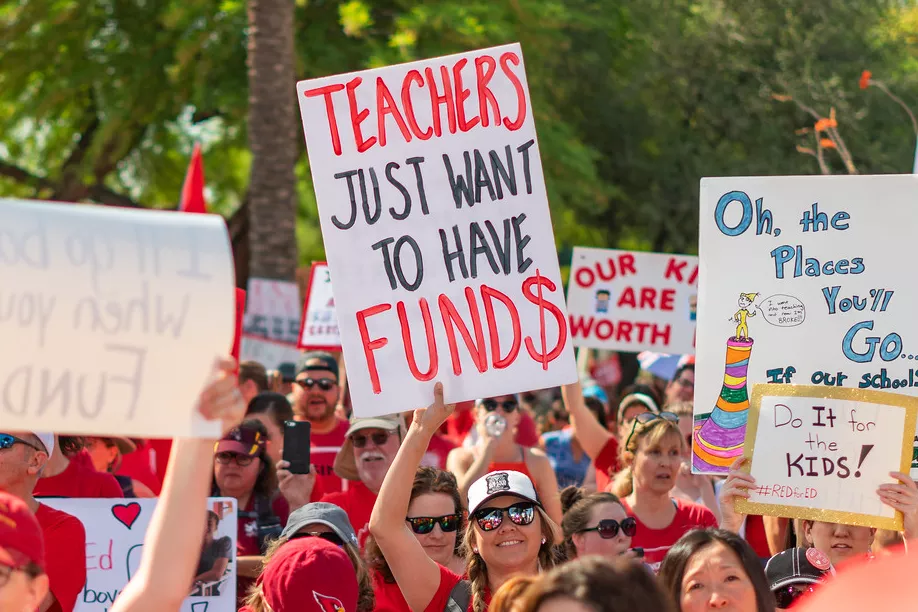Since the pandemic began last year, the federal government has enacted rescue legislation providing unprecedented levels of support for education. NEA believes that these funds should be used to advance equity, close opportunity gaps for vulnerable students, support the educator workforce, and protect the health and safety of educators, students, and their families.
But it will take ongoing effort by NEA locals and other public education advocates to ensure that this funding is used effectively for pandemic recovery and to increase equity in their schools, a critical step on the path to racial and social justice.
What Types of Funds Are Available
Federal emergency aid for public education over the last year has come through three separate laws:
- CARES (Coronavirus Aid, Relief, and Economic Security) Act, March 2020
- CRRSA (Coronavirus Response and Relief Supplemental Appropriations) Act, December 2020
- ARP (American Rescue Plan) Act, March 2021
The Elementary and Secondary School Emergency Relief (ESSER) Fund is the main source of funding for public elementary and secondary education under each law. As each succeeding law was enacted, the U.S. Department of Education (ED) modified the acronym ESSER to distinguish one fund from the other. Collectively, they are known as ESSER funds. In addition, each subsequent law extended the period of time that the funds can be used.
Here is a summary of each ESSER fund, the amount of funding provided, and the period of availability.
| ESSER Funds | Funding Amount | Period of Availability* |
| ESSER or ESSER I (CARES Act) | $13.2 billion | Through Sept. 30, 2022 |
| ESSER II (CRRSA Act) | $54.3 billion | Through Sept. 30, 2023 |
| ARP ESSER or ESSER III (ARP Act) | $122.8 billion | Through Sept. 30, 2024 |
*Includes the Tydings period. In general, any funds not obligated and expended during the period for which they were awarded become carryover funds and may be obligated and expended during the succeeding fiscal year.
Nationally, $190 billion in federal emergency aid is provided to states through the ESSER funds in support of public elementary and secondary education, or about $3,700 per student. The American Rescue Plan (ARP) is the single largest investment ever in public education.
It is critical that our members’ voices are heard in how and where this money is spent. No less than 90 percent of ARP ESSER funds will be delivered to local education agencies (LEAs) through Title I, which may be used by school districts for purposes defined by ED to address emergency needs and learning recovery related to COVID-19.
Whether bargaining is permitted in your state or not, it is vital that state and local education associations raise educator voices and assert their professional authority to ensure that all stakeholders, including educators, parents, and community, provide input and be a part of the decision-making processes.
While some of the money was allocated to states starting in March, states must submit plans to receive the remaining funds. State Education Agencies (SEAs) and LEAs have already begun to develop plans and decide how these funds will be utilized. But they can’t make these decisions in isolation. Under ARP interim federal regulations, the SEA is required to consult with educators and their unions. The interim final requirements state that:
[A]n SEA must engage in meaningful consultation with various stakeholder groups on its ARP ESSER plan and give the public an opportunity to provide input on the development of the plan and take such into account. Specifically an SEA is required to consult with students; families, Tribes (if applicable); civil rights organizations (including disability rights organizations); school and district administrators (including special education administrators); superintendents; charter school leaders (if applicable); teachers, principals, school leaders, other educators, school staff, and their unions; and stakeholders representing the interests of children with disabilities, English learners, children experiencing homelessness, children in foster care, migratory students, children who are incarcerated, and other underserved students in the development of its ARP ESSER plan. Under the requirement, an SEA must also provide the public with the opportunity to provide input in the development of the plan and take such input into account.
Therefore, whether bargaining is permitted in your state or not, it is vital that state and local education associations raise educator voices and assert their professional authority to ensure that all stakeholders, including educators, parents, and community, provide input and be a part of the decision-making processes. It is also a good opportunity to grow member engagement and organizing.
This guidance focuses on local advocacy, particularly how local affiliates can bargain and advocate for resources that not only support student learning, but also students’ social-emotional well-being. ARP ESSER funds can also be used to provide much needed supports for educators, including improving salary, benefits, and working conditions which are critical to recruiting and retaining high quality staff. These improvements are crucial to ensure sufficient staffing for schools.
Whether affiliates are entitled to engage in formal collective bargaining under state law, or rely on less formal advocacy practices in non-bargaining states, they should immediately invoke their right to engage in “meaningful consultation.”
For additional bargaining or advocacy questions or resources including contract language, contact NEA’s Department of Collective Bargaining and Member Advocacy at [email protected].
For ARP-related questions in general, email [email protected].
Sign up your local


